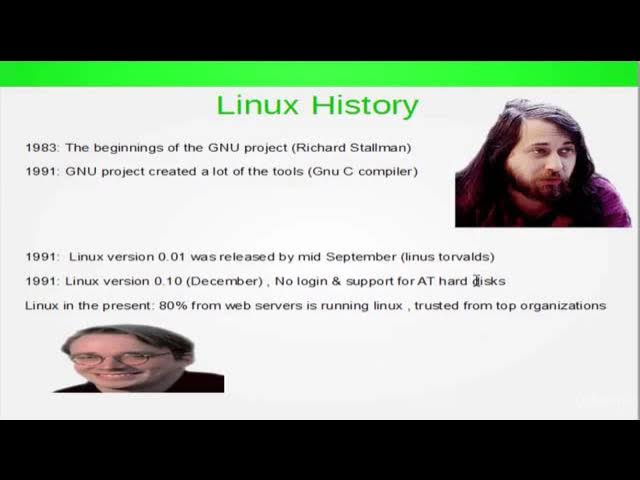Introduction To Linux CentOS 7 - part 1

Short Summary:
This introductory video to CentOS 7 (part 1) explains Linux as an operating system, its history, and advantages/disadvantages. Key points include Linux's open-source nature, its development stemming from the GNU project and Linus Torvalds' kernel, and the existence of various distributions like Red Hat, Ubuntu, and CentOS. The video highlights CentOS's suitability for this course due to its free nature, stability, and speed, mirroring Red Hat's features. The implications are that Linux is a powerful, versatile, and widely adopted operating system used by major companies and institutions globally. No specific processes or methods beyond the general concepts of operating system function and open-source development are detailed.
Detailed Summary:
The video is structured into several sections:
-
What is Linux?: The video begins by defining Linux as an operating system, similar to Windows or macOS, acting as a mediator between hardware and software. Examples are given of how the OS manages resources like RAM and hard drive space for applications.
-
A Brief History of Linux: This section covers the origins of Linux, highlighting Linus Torvalds' release in 1991 and the crucial role of the GNU project and Richard Stallman's vision of free and open-source software. The difference between viewing and editing open-source code due to license agreements is explained. The early versions of Linux (0.10) and its subsequent growth and adoption by companies are mentioned.
-
Linux Distributions: The video explains that various companies have created distributions of Linux, such as Red Hat, Ubuntu, and CentOS, each with its own releases and slight variations in commands, configuration files, and security features. The example of TrustExec, a security-focused distribution, is given. The speaker emphasizes that the differences between distributions are generally minor.
-
Advantages and Disadvantages of Linux: The advantages discussed include being free (excluding commercial support for distributions like Red Hat and SUSE), good stability, ease of installation, enhanced security, platform independence, various "flavors" for different needs (desktop, server, penetration testing), and the lack of slowdown over time. Disadvantages include a learning curve for new users and the need for self-reliance in troubleshooting (though readily available online resources are mentioned).
-
Why CentOS?: The final section justifies the choice of CentOS for the course, citing its free availability, stability, speed, and its similarity to Red Hat Enterprise Linux. The widespread use of Linux by major companies like Google, Facebook, Twitter, McDonald's, and NASA is highlighted to demonstrate its significance.
Notable Quotes/Statements: The speaker repeatedly emphasizes the open-source nature of Linux and the minor differences between distributions. The statement about Linux not slowing down over time is also a key selling point. The explanation of the OS as a mediator between hardware and software is fundamental to understanding its function.